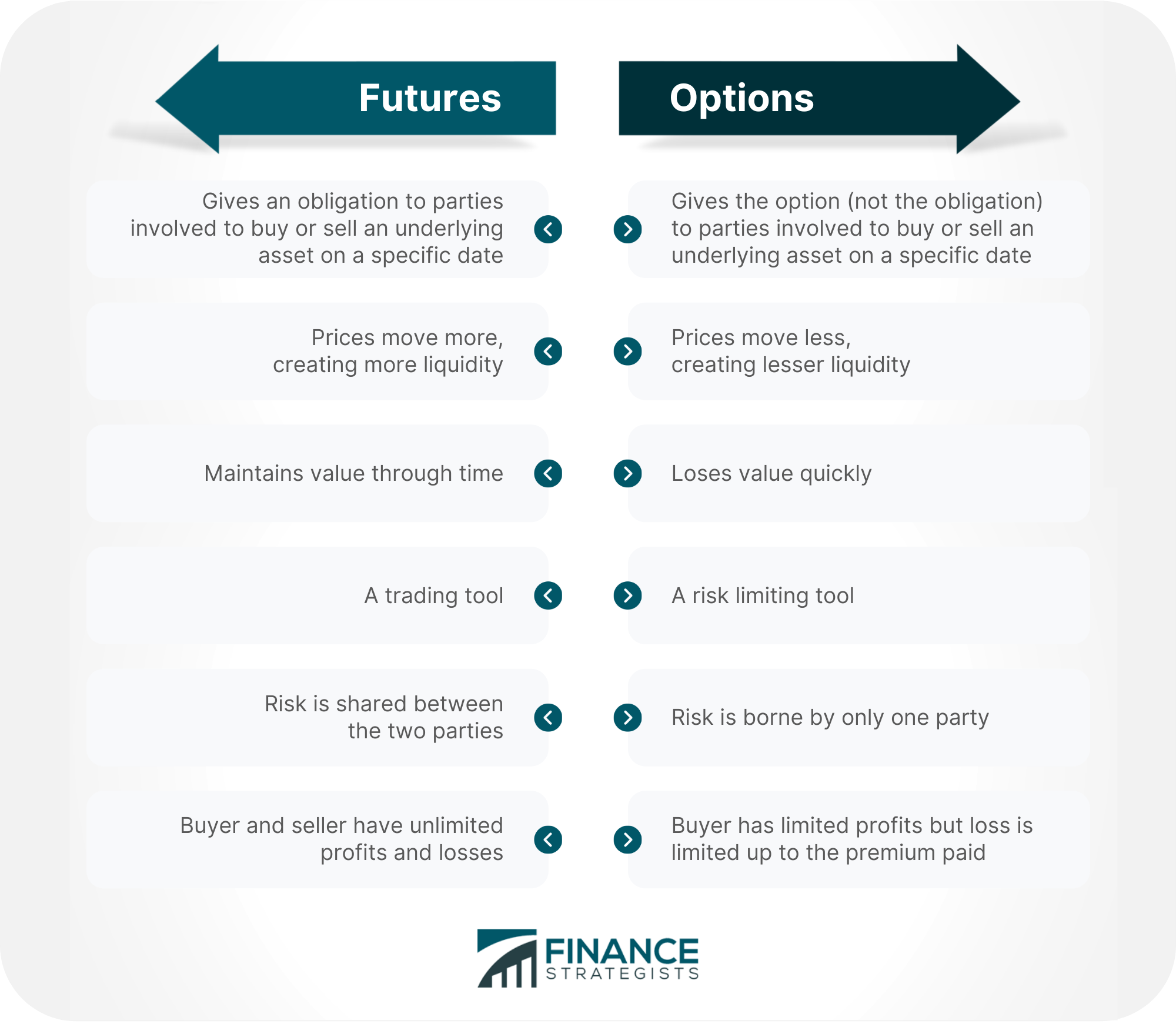Understanding the Divergences: Options vs. Forex Trading

Image: learn.financestrategists.com
In the captivating world of financial markets, where opportunities and risks intertwine, traders and investors are constantly seeking the ideal path to expand their portfolios. Two prominent frontiers in trading are options and forex. While superficially similar, these instruments possess fundamental differences that shape the landscape for traders. Embark on an illuminating journey as we delve into the intricate tapestry that differentiates options and forex trading, unraveling their unique nuances and potential.
Delving into the Realm of Options Trading
Options, aptly named for their inherent flexibility, grant traders the right – not the obligation – to buy or sell an underlying asset at a predetermined price (strike price) by a specified date. This inherent non-committal aspect sets them apart from futures contracts, offering traders the option to capitalize on market movements without the burden of immediate execution.
Options can be classified into two primary types:
- Calls: Bestowing the right to buy an asset.
- Puts: Conveying the right to sell an asset.
Traders leverage options to speculate on asset price fluctuations, exploiting the potential for both reward and loss. A multitude of strategies can be employed to navigate the options market, ranging from simple one-leg trades to intricate multi-leg combinations.
Exploring the Dynamics of Forex Trading
Forex, an abbreviation of foreign exchange, stands as the global marketplace where currencies are traded. Its vast network facilitates the exchange of one currency for another, facilitating international trade and financial transactions. Forex trading involves speculating on the relative values of currency pairs, attempting to profit from the ever-shifting exchange rates.
Unlike options, forex trading does not entail acquiring physical currencies but rather betting on their directional fluctuations. Forex traders draw upon advanced analysis techniques and strategies to make informed decisions, aiming to seize opportunities presented by exchange rate movements.
Unveiling the Key Differences
Amidst their shared purpose of financial gain, options and forex trading exhibit distinct characteristics that delineate their individual identities:
- Underlying Asset: Options are tied to a specific underlying asset, such as stocks, indices, or commodities, while forex involves trading currency pairs.
- Flexibility: Options offer greater flexibility due to the non-obligatory nature of contracts, whereas forex trading requires traders to enter executed contracts.
- Leverage: Forex trading generally offers higher leverage than options, allowing traders to control substantial positions with less capital.
- Risk/Reward: Options provide a defined risk and reward scenario determined by the premium paid, while forex trading presents potentially higher risks due to the possibility of losing more than the invested capital.
- Regulation: Forex trading is decentralized and regulated by various bodies, while options trading operates under the jurisdiction of specific exchanges and regulatory authorities.
Expert Insights and Practical Tips
Navigating the depths of options and forex trading demands a blend of knowledge, intuition, and strategic wisdom. Here are some valuable insights from industry experts:
- Thorough Understanding: Mastery in either options or forex trading necessitates a comprehensive grasp of concepts and market dynamics.
- Risk Management: Disciplined risk management practices are crucial to mitigate potential losses and safeguard capital.
- Market Analysis: Meticulous market analysis, encompassing technical and fundamental factors, forms the cornerstone of successful trading decisions.
- Emotional Discipline: Maintaining emotional equilibrium in the face of market fluctuations is paramount to avoid impulsive trades.
- Continuous Learning: The financial markets are ever-evolving, necessitating ongoing learning and adaptation to stay abreast of changing dynamics.
Conclusion
The contrasting worlds of options and forex trading present intriguing opportunities and challenges for traders seeking financial growth. While options offer flexibility and defined risk, forex offers higher leverage and potential rewards. Ultimately, the choice between these instruments hinges upon individual risk tolerance, trading style, and financial objectives. Armed with a profound understanding of the differences between options and forex trading, investors can make informed decisions that align with their aspirations in the global financial arena. Remember to approach these markets with a spirit of continuous learning, disciplined risk management, and emotional fortitude to maximize your trading potential.

Image: doc.hybridsolutions.com
Differences Between Trading Options And Forex

Image: sureshotfx.com






